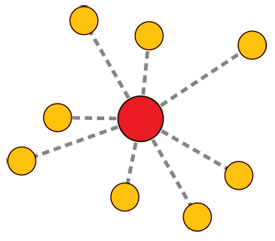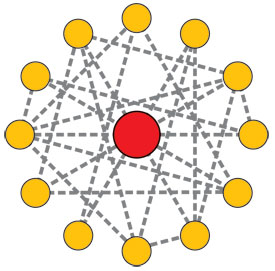by Phil Porter
For the longest time, I wasn’t big on that left/right brain thing. Seemed a bit simplistic to me and besides, I could never remember which side did what! I had heard people debunk it and people support it, so I wasn’t sure which way to turn.
But recently I have recognized it as a simple way to talk about how we need to use all parts of ourselves in order to be effective both individually and in groups. We need lefty sorts of stuff—facts and data and numbers and spreadsheets and logic and plans and evaluations and PROOF! But we also need righty sorts of stuff too—intuition, connection, affirmation, vision, creativity, emotions, dreams, hope, mystery, and a bit of knowing about what to do when it seems like it is getting very, very dark.
Now maybe those functions are isolated on one side of the brain or the other, and maybe they aren’t. I don’t need neurology or physiology or psychology to know that I know something about the elements on both the left-brain and right-brain lists above.
In our schools and organizations and corporations, we seem to be just a bit obsessed with the first list—the quantifying stuff. (Some might even call it the “tyranny of the left-brainers.” Not me, of course, but some.) We’re much less sure what to do about those “qualitative” experiences. But in your group or staff, wouldn’t you want people to know how to deal with fear or disappointment or jealousy or just being stuck in ways that work better than just sweeping those uncomfortable experiences under the rug?
Where do we learn those sorts of skills—the right-brainy stuff? Turns out this training often happens in the realms of the arts and the spirit and the physical. We learn it in faith communities and through spiritual practices. We learn it by playing with the building blocks of creation: color, light, space, movement, sound, energy. We learn it by challenging our bodies through exercise or sports or other physical engagement.
Does your workplace teach you how to fully use the right side of your brain in the same way that it would commonly expect to utilize the left side? Does it call out and affirm the right-side skills that already exist in its members? Do organizations recognize the artists and spirit people amongst them that bring these gifts to the work of the whole—the person who creates ease in the group, the one who knows how to turn adversity into new directions, the ones who know how to “work well with others,” those who are appreciative or grateful and bring out the best in others, the ones who can imagine Plan E when A, B, C and D have failed?
No one living in today’s complex world can afford to ignore the importance of all parts of our experience.




 Posted by fridaymorninginterplay
Posted by fridaymorninginterplay 

